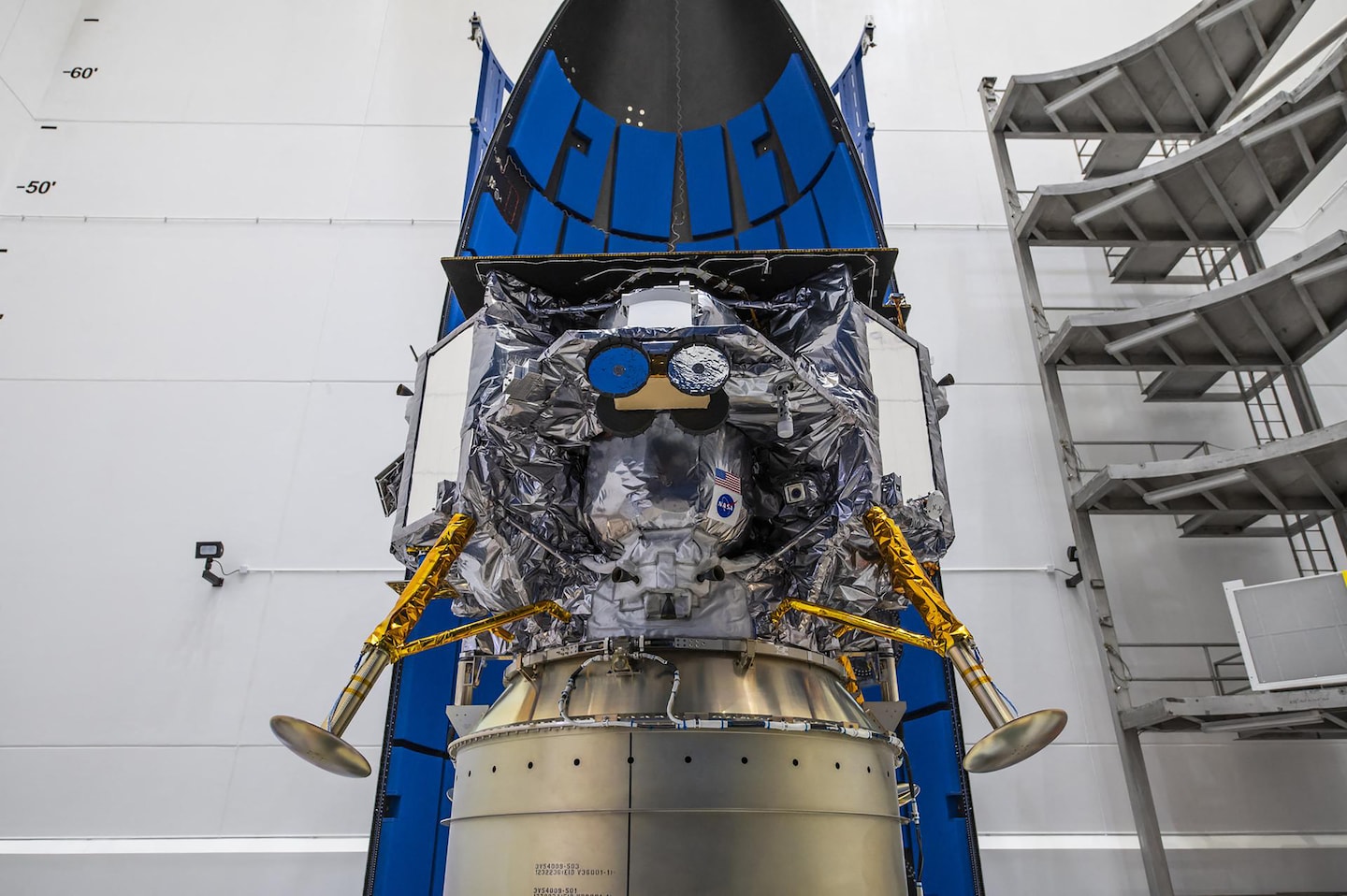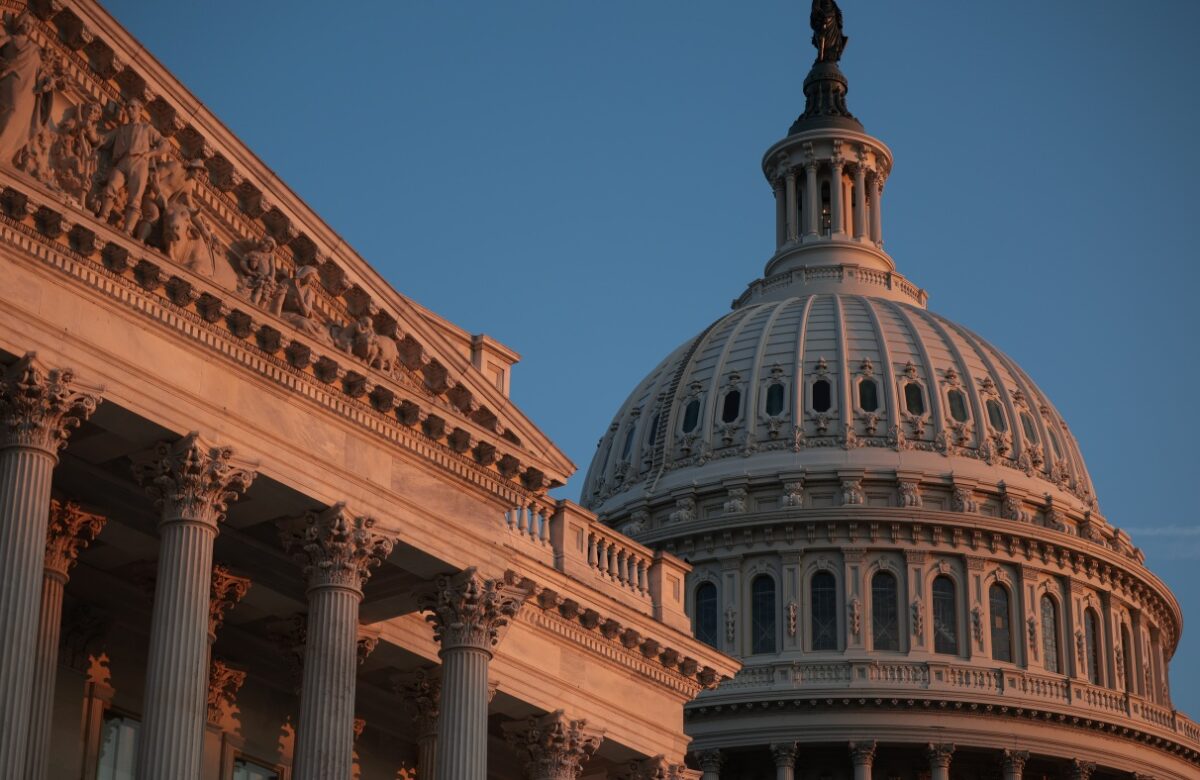
NASA, private companies eye moon landings for the first time in 50 years
- Science
- January 7, 2024
- No Comment
- 136
The next launch to the moon could come in mid-February, when another company, Intuitive Machines, is scheduled to launch its lander to the moon on SpaceX’s Falcon 9 rocket. On Friday, a spokesman for the company said it is targeting a landing on Feb. 22 or before, which, if successful, would beat Astrobotic by a day and make Intuitive Machines the first commercial entity to land on the moon.
Monday’s launch of the Astrobotic spacecraft would mark another potentially important milestone, the first flight of a long-awaited new rocket designed by the United Launch Alliance, a joint venture of Lockheed Martin and Boeing. The Pentagon is eager to use the rocket, dubbed Vulcan, to launch national security missions, but first ULA needs to successfully complete two certification missions before it would be allowed to launch satellites for the Defense Department.
Monday’s launch, scheduled for 2:18 a.m. Eastern, is also a big moment for Blue Origin, the space venture founded by Jeff Bezos. Two BE-4 engines manufactured by Blue Origin will power the first stage of ULA’s Vulcan rocket in their first flight. Bezos and ULA’s CEO, Tory Bruno, first announced the engine deal in 2014 after ULA, which had been using Russian engines, was forced by Congress to find a domestic supplier. But the engines took much longer to develop than initially anticipated, forcing a delay in the debut of Vulcan. (Bezos owns The Washington Post.)
Blue Origin also intends to fly its New Glenn rocket for the first time this year. It is powered by seven BE-4 engines.
The missions come as NASA is working toward the second flight of Orion around the moon, this time with four people on board: NASA astronauts Christina Koch, Victor Glover and Reid Wiseman as well as Canadian astronaut Jeremy Hansen. Currently, the flight, a 10-day mission around the moon known as Artemis II, is scheduled for late this year. But that could slip into 2025, NASA Administrator Bill Nelson said in an interview, as engineers continue to study how the capsule’s heat shield performed during its first flight to the moon. While there was still plenty of margin, NASA officials said, more of the heat shield burned off during reentry than had been anticipated.
“At some point all these technical geniuses are going to come together and make a decision,” Nelson said. “I’m very optimistic that they will have the heat shield with the integrity they want. But obviously, we’re not going to fly until we do, and we’ll have that answer pretty soon.”
Meanwhile, SpaceX continues to test its Starship rocket and spacecraft, the vehicle NASA has selected to land astronauts on the moon for the first two human landings under Artemis. Its two previous launch attempts failed to reach orbit, but Elon Musk’s company showed significant progress between them. Recently, it test-fired the engines of the next booster and ship it intends to launch. It appears to be getting close to another attempt but still needs sign-off from the Federal Aviation Administration.
Astrobotic’s Peregrine spacecraft will take a fairly direct route to the moon, Astrobotic CEO John Thornton said in a November briefing. But its landing will be delayed until Feb. 23 as it loiters in lunar orbit, waiting for the sun to shine on the intended landing spot.
“Most of the time between launch and landing is actually waiting for the local lighting to be correct,” he said. “So basically we’re trying to land at a specific spot on the moon at a specific time, i.e., morning at this location.”
On Friday, he told reporters that the company faced “a whole lot of challenges that we’ve had to overcome” including “a lot of doubters.”
“When we started in Pittsburgh,” he said, referring to the company’s headquarters, “the idea of building a space company, much less one to go to the moon, was completely foreign and alien. And folks certainly and literally laughed at the concept.”
He said he was well aware of the difficulty of landing on the moon and of the past failures of so many other attempts. “It will be exciting, nail-biting and terrifying all at once — a whole range of emotions,” he said. “If you look back in the course of history, only about half of those missions have been successful. And most of those have been funded by superpowers with vastly larger budgets than this mission has been granted. So it’s a really, really big challenge.”
Still, he said, “To be leading America back to the surface of the moon for the first time since Apollo is a momentous honor that we’re lucky to be to be a part of.”
NASA said Friday that the value of Astrobotic’s contract is $108 million.
A spokesperson for Intuitive Machines said the company expects its spacecraft to touch down “approximately seven days after launch.” But it has said only that its launch date would come in mid-February, so it’s not clear which company will land first.
There are a number of other significant space events coming up in 2024.
On Jan. 19, the Japanese space agency intends to land a robotic vehicle on the moon, an outcome that would make Japan the fifth country to do so. But landing on the moon is risky — and many have tried and failed in the past. Last year, ispace, a Japanese company, lost a spacecraft as it attempted to land on the moon. Russia also lost a spacecraft attempting a lunar landing last year.
Axiom, a Houston-based company, intends to fly its third private astronaut mission to the space station on Jan. 17. And in February, SpaceX is set to launch its eighth crew rotation mission to the International Space Station.
In April, Jared Isaacman, the billionaire entrepreneur who commissioned a private astronaut mission aboard SpaceX’s Dragon capsule, also is scheduled to fly another all-civilian mission. This time, the crew would step outside Dragon to perform a spacewalk using pressure suits designed by SpaceX.
Also in April, Boeing is expected to launch a pair of NASA astronauts to the space station on the first crewed test flight of its Starliner spacecraft. If that is successful, it would finally give NASA a way besides SpaceX to get its astronauts to space. Boeing, which was granted a contract to ferry astronauts to the space station in 2014, at the same time as SpaceX, has faced years of setbacks and delays and has yet to fly with crew, something SpaceX has done several times.
SpaceX launched a record 98 rockets to orbit in 2023 and is looking to launch as many as 144 this year, as it continues to put up its Starlink internet satellite constellation.
Planned space missions in 2024
Jan. 8 — ULA plans to launch an Astrobotic spacecraft to the moon aboard a Vulcan rocket powered by engines manufactured by Blue Origin.
Jan. 17 — Axiom plans to launch a group of private citizens to the International Space Station aboard a SpaceX rocket, Axiom’s third charter mission to the space station.
Jan. 19 — The Japanese space agency plans to land a robotic vehicle on the moon.
February — SpaceX is set to launch its eighth crew rotation mission to the International Space Station.
Mid-February — Intuitive Machines plans to launch its spacecraft to the moon aboard a SpaceX booster.
April — SpaceX plans to launch a crew of private astronauts on a mission to orbit the Earth, chartered by entrepreneur and philanthropist Jared Isaacman, that is expected to include a spacewalk.
April — Boeing is expected to launch a crew to the International Space Station on its long-delayed Starliner capsule.
#NASA #private #companies #eye #moon #landings #time #years









